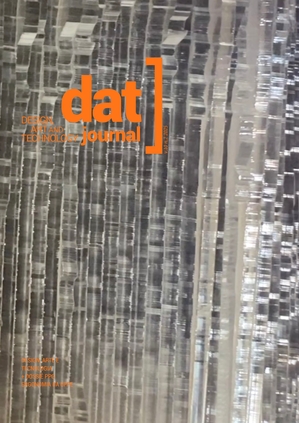Modelo integrador de las clasificaciones de jugadores
DOI:
https://doi.org/10.29147/datjournal.v10i2.908Palabras clave:
Clasificación de jugadores, Taxonomía de jugadores, Tipología de jugadoresResumen
Los modelos de clasificación de jugadores son ampliamente estudiados y se dividen en dos enfoques principales: las tipologías, que adoptan perspectivas teóricas y deductivas, y las taxonomías, basadas en datos empíricos e inductivos. El objetivo de este artículo es proponer un modelo integrador que consolide las principales tipologías y taxonomías de jugadores en una estructura unificada. La investigación utiliza un método mixto de revisión bibliográfica y metasíntesis teórica, analizando 26 estudios relevantes para identificar convergencias y divergencias entre los modelos existentes. El modelo resultante organiza las clasificaciones en tres dimensiones: fuentes de datos, objetivo de la clasificación y modelo de clasificación. Esta estructura ofrece una visión integral para la comprensión de los perfiles de jugadores y contribuye a los estudios sobre su comportamiento.
Descargas
Citas
BAILY, Kenneth. Typologies and taxonomies: An introduction to classification techniques. London - UK: Sage University Paper series on Quantitative Applications in the Social Sciences, 1994.
BARTLE, Richard. HEARTS, CLUBS, DIAMONDS, SPADES: PLAYERS WHO SUIT MUDS. Journal of MUD research, 1996.
BATEMAN, Chris; LOWENHAUPT, Rebecca; NACKE, Lennart E. Player typology in theory and practice. Proceedings of DiGRA 2011 Conference: Think Design Play, p. 1–24, 2011.
CARNEIRO, Nayana; SOUZA, Kaian; SIDARTA, Izac; PEREIRA, Geórgia; MENDONÇA, Glaudiney; DARIN, Ticianne. To Each Their Own (Type): A Systematic Mapping Study on Player’s Motivations, Behavior, and Personality Characteristics. ACM International Conference Proceeding Series, 2021. DOI 10.1145/3472301.3484352.
DRACHEN, Anders; CANOSSA, Alessandro; YANNAKAKIS, Georgios N. Player modeling using self-organization in Tomb Raider: Underworld. CIG2009 - 2009 IEEE Symposium on Computational Intelligence and Games, February 2019, p. 1–8, 2009. https://doi.org/10.1109/CIG.2009.5286500.
ELVERDAM, Christian; AARSETH, Espen. Game classification and game design: Construction through critical analysis. Games and Culture, 2007. https://doi.org/10.1177/1555412006286892.
GIL, Antônio Carlos. Como Elaborar Projetos de Pesquisa. SÃO PAULO, ed. 4a Edição, p. 175, 2002. https://doi.org/10.1111/j.1438-8677.1994.tb00406.x.
GRIFFITHS, Mark D.; DAVIES, Mark N.O.; CHAPPELL, Darren. Demographic factors and playing variables in online computer gaming. Cyberpsychology and Behavior, 2004. https://doi.org/10.1089/cpb.2004.7.479.
HAMARI, Juho; TUUNANEN, Janne Jenne Janne. Player Types : A Meta-synthesis. Transactions of the Digital Games Research Association, vol. Vol. 1, No, no. JANUARY 2014, p. 29–53, 2014. DOI 10.1111/j.1083-6101.2006.00301.x.
HAWKINS, Donald T.; LARSON, Signe E.; CATON, Bari Q. Information science abstracts: Tracking the literature of information science. Part 2 - A new taxonomy for information science. Journal of the American Society for Information Science and Technology, 2003. https://doi.org/10.1002/asi.10275.
HOCHLEITNER, Wolfgang; LANKES, Michael; NACKE, Lennart E.; TSCHELIGI, Manfred; BUSCH, Marc; MATTHEISS, Elke; ORJI, Rita; MARCZEWSKI, Andrzej. Personalization in serious and persuasive games and gamified interactions. 2015. CHI PLAY 2015 - Proceedings of the 2015 Annual Symposium on Computer-Human Interaction in Play [...]. 2015. https://doi.org/10.1145/2793107.2810260.
LAVOUÉ, Élise; MONTERRAT, Baptiste; DESMARAIS, Michel; GEORGE, Sébastien. Adaptive Gamification for Learning Environments. IEEE Transactions on Learning Technologies, 2019. https://doi.org/10.1109/TLT.2018.2823710.
MARRADI, Alberto. Classification, typology, taxonomy. Quality and Quantity, 1990. https://doi.org/10.1007/BF00209548.
MOREIRA, Victor. As relações entre perfil de jogador e personalidade : um comparativo entre pesquisas. 13o Congresso Brasileiro de Pesquisa e Desenvolvimento em Design, 2018.
MOREIRA, Victor Emanuel Montes; OKIMOTO, Maria Lucia Leite Ribeiro. As relações entre o foco de atenção e o perfil dos jogadores: um estudo com rastreamento ocular e tipologia de jogadores BrainHex. In: PRADO, Gheysa Caroline; SIERRA, Isabella de Souza; OKIMOTO, Maria Lúcia Leite Ribeiro (eds.). Coletânea de estudos do PPGDesign/UFPR 2024 : novos horizontes da pesquisa em design. 1st ed. Bauru, SP: Canal 6, 2024. p. 47–62. https://doi.org/10.52050/9788579176685.1.
MYERS, Isabel Briggs; MYERS, Peter Briggs. Gifts Differing: Understanding Personality Type. Montain View, California: Davies-Black, 1995.
NACKE, Lennart E.; BATEMAN, Chris; MANDRYK, Regan L. BrainHex: A neurobiological gamer typology survey. Entertainment Computing, vol. 5, no. 1, p. 55–62, 2014. DOI 10.1016/j.entcom.2013.06.002.
ODIERNA, Bruno Almeida; SILVEIRA, Ismar Frango. PLAYER GAME DATA MINING FOR PLAYER CLASSIFICATION. A Produção do Conhecimento na Engenharia da Computação. 2019. https://doi.org/10.22533/at.ed3921924055.
OLIVEIRA, Wilk; HAMARI, Juho; SHI, Lei; TODA, Armando M.; RODRIGUES, Luiz; PALOMINO, Paula T.; ISOTANI, Seiji. Tailored gamification in education: A literature review and future agenda. Education and Information Technologies. DOI 10.1007/s10639-022-11122-4.
PARK, Sungjin; MIN, Kyoungsoon; KIM, Sangkyun. Differences in learning motivation among bartle’s player types and measures for the delivery of sustainable gameful experiences. Sustainability (Switzerland), 2021. https://doi.org/10.3390/su13169121.
PAULIN, Rafael Eduardo. Mapeamento das Relações entre Perfis de Jogadores , Tipos Psicológicos , Emoções e Componentes de Jogos Eletrônicos. 2013. Available at: http://hdl.handle.net/1884/35646.
RODRIGUES, Luiz A.L.; BRANCHER, Jacques D. Improving Players’ Profiles Clustering from Game Data Through Feature Extraction. Brazilian Symposium on Games and Digital Entertainment, SBGAMES, vol. 2018-Novem, p. 177–186, 2018. https://doi.org/10.1109/SBGAMES.2018.00029.
RODRÍGUEZ, Inmaculada; PUIG, Anna; RODRÍGUEZ, Àlex. Towards Adaptive Gamification: A Method Using Dynamic Player Profile and a Case Study. Applied Sciences (Switzerland), 2022. https://doi.org/10.3390/app12010486.
RYAN, Richard M.; DECI, Edward L. Intrinsic and Extrinsic Motivations: Classic Definitions and New Directions. Contemporary Educational Psychology, 2000. https://doi.org/10.1006/ceps.1999.1020.
SANDELOWSKI, MARGARETE; BARROSO, Julie. Handbook for Synthesizing Qualitative Research. New York, 2007.
SCHUURMAN, Dimitri; DE MOOR, Katrien; VAN LOOY, Jan; DE MAREZ, Lieven. Fanboys, competers, escapists and time-killers: A typology based on Gamers’Motivations for playing video games. Proceedings - 3rd International Conference on Digital Interactive Media in Entertainment and Arts, DIMEA 2008 September, p. 46–50, 2008. https://doi.org/10.1145/1413634.1413647.
SIFA, Rafet; DRACHEN, Anders; BAUCKHAGE, Christian. Profiling in Games: Understanding Behavior from Telemetry. Social Interactions in Virtual Worlds: An Interdisciplinary Perspective. 2018. https://doi.org/10.1017/9781316422823.014.
TONDELLO, Gustavo F.; WEHBE, Rina R.; DIAMOND, Lisa; BUSCH, Marc; MARCZEWSKI, Andrzej; NACKE, Lennart E. The Gamification User Types Hexad Scale. Proceedings of the 2016 Annual Symposium on Computer-Human Interaction in Play - CHI PLAY ’16, p. 229–243, 2016. DOI 10.1145/2967934.2968082.
TONDELLO, Gustavo F.; WEHBE, Rina R.; ORJI, Rita; RIBEIRO, Giovanni; NACKE, Lennart E. A Framework and Taxonomy of Videogame Playing Preferences. Proceedings of the Annual Symposium on Computer-Human Interaction in Play - CHI PLAY ’17, p. 329–340, 2017. DOI 10.1145/3116595.3116629.
TONDELLO, Gustavo Fortes. Dynamic Personalization of Gameful Interactive Systems. 2019. University of Waterloo, 2019. Available at: http://hdl.handle.net/10012/14807.
TONDELLO, Gustavo Fortes; VALTCHANOV, Deltcho; REETZ, Adrian; WEHBE, Rina R.; ORJI, Rita; NACKE, Lennart E. Towards a Trait Model of Video Game Preferences. International Journal of Human-Computer Interaction, vol. 34, no. 8, p. 732–748, 2018. DOI 10.1080/10447318.2018.1461765.
VAHLO, Jukka; KAAKINEN, Johanna K.; HOLM, Suvi K.; KOPONEN, Aki. Digital Game Dynamics Preferences and Player Types. Journal of Computer-Mediated Communication, vol. 22, no. 2, p. 88–103, 2017. https://doi.org/10.1111/jcc4.12181.
WALSH, Denis; DOWNE, Soo. Meta-synthesis method for qualitative research: A literature review. Journal of Advanced Nursing, 2005. https://doi.org/10.1111/j.1365-2648.2005.03380.x.
WILLIAMS, Dmitri; DUCHENEAUT, Nicolas; XIONG, Li; ZHANG, Yuanyuan; YEE, Nick; NICKELL, Eric. From tree house to barracks: The social life of guilds in World of Warcraft. Games and Culture, vol. 1, no. 4, p. 338–361, 2006. https://doi.org/10.1177/1555412006292616.
XIONG, Shuo; WEN, Ruoyu; ZHENG, Huijuan. Player Category Research on Murder Mystery Games. International Journal of Role-Playing, 2023. https://doi.org/10.33063/ijrp.vi13.308.
YEE, Nick. Motivations of Play in Online Games. CyberPsychology and Behavior, vol. 9, p. 772–775, 2007. https://doi.org/10.1089/cpb.2006.9.772.
YEE, Nick. The Demographics, Motivations and Derived Experiences of Users of Massively Multi-User Online Graphical Environments. PRESENCE: Teleoperators and Virtual Environments, [s. l.], vol. 15, no. 3, p. 309–329, 2006. https://doi.org/doi:10.1162/pres.15.3.309.
ZACKARIASSON, Peter; WÅHLIN, Nils; WILSON, Timothy L. Virtual identities and market segmentation in marketing in and through massively multiplayer online games (MMOGs). Services Marketing Quarterly, vol. 31, no. 3, p. 275–295, 2010. https://doi.org/10.1080/15332969.2010.486689.
Descargas
Publicado
Cómo citar
Número
Sección
Licencia
Derechos de autor 2025 DAT Journal

Esta obra está bajo una licencia internacional Creative Commons Atribución 4.0.


























